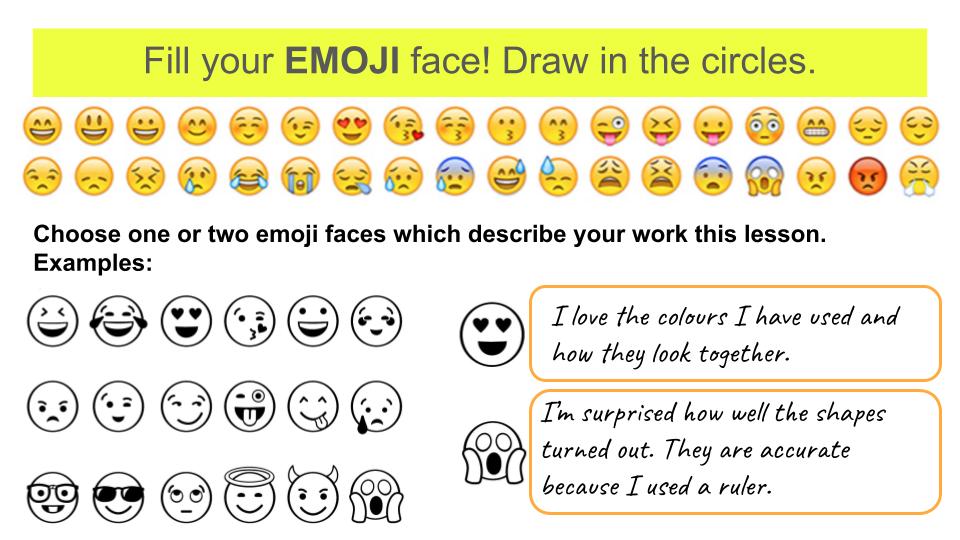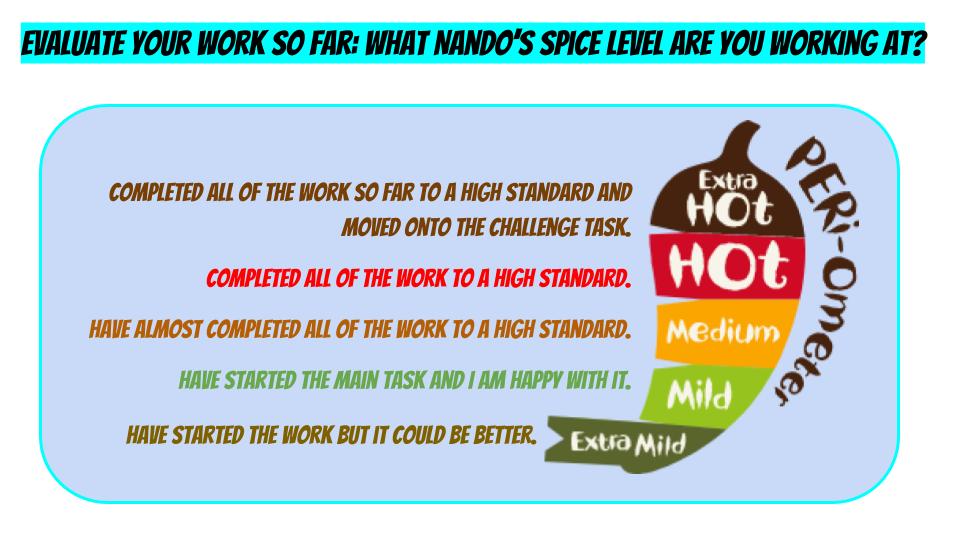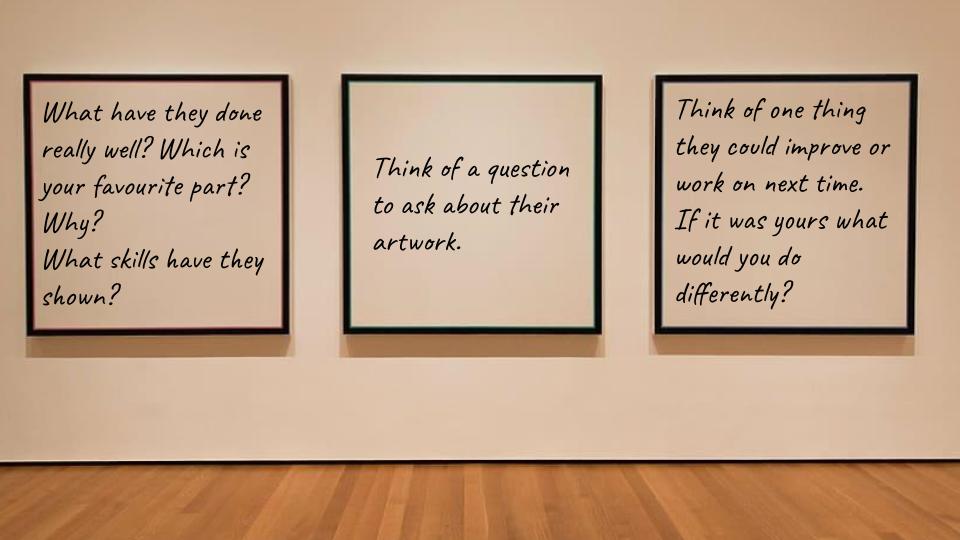Peer and self assessments; whole class evaluations; formative and summative assessments; teacher feedback; exit tickets; quick checks; verbal feedback… The list of ways for art students to receive feedback or evaluate their artwork can seem endless (and sometimes confusing) but these learning activities are critical for engaging and purposeful art lessons. Without succinct feedback, time to reflect or evaluate their artwork, students can often miss (or forget) important elements of the lesson outcomes, or even not understand how to achieve them. Using a range of feedback activities in art lessons can help to ensure all students are on board with the lesson aims and how to achieve or exceed them.
Get art lesson resources straight to your email:
If you would like the presentation with all of these assessment for learning ideas, just leave a comment below and I will share it with you.
Reflecting on my teaching recently, I felt that I was stuck in a bit of an ‘assessment rut’ and was using the same WWW / EBI (What Went Well / Even Better If) feedback activities over and over again. This is where students identify successes and targets in each other’s work and can be an effective formative assessment tool and a good way to peer assess artwork – but! It often comes in the same repetitive format of students writing down feedback or giving it verbally.
So, since I am a loud and proud Teaching and Learning geek, I thought I would do a bit of research.
Here comes *some* of the science…
Peer assessment has been noted as a potential learning strategy for engaging students in knowledge construction and skill development via comprehending teachers’ assessment criteria, learning from viewing peers’ work, and making reflections. Topping (1998) defined peer assessment as a learning strategy whereby students evaluate or comment on the value or the quality of the work or the learning outcomes of their peers who learned with the same learning content. The objectives of conducting peer assessment activities are to improve the students’ learning outcomes, stimulate their higher order thinking (e.g., meta-cognitive awareness), and increase their autonomy. For example, several studies have reported that peer assessment activities are effective in terms of enhancing students’ autonomous learning ability. Moreover, the effect of engaging students in the role of a reviewer on their reflections has been pointed out. On the other hand, the benefit of receiving feedback from peers in improving students’ learning outcomes has also been reported. For instance, Nicolaidou (2013) found that students’ feedback could gradually become more comprehensive and correct by inspecting peers’ comments in the learning process. Other researchers have also found that assessment training can result in a significant decrease in the discrepancy between student and instructor ratings of example projects; that is, the students’ meta-cognitive awareness might be improved.
Chiu-Lin Lai, Gwo-Jen Hwang,
https://doi.org/10.1016/j.compedu.2015.02.011.
(https://www.sciencedirect.com/science/article/pii/S0360131515000639)
I have shared a huge list of engaging art entry tasks, art lesson starters and art plenaries here. Enjoy!
Here I have collated a range of fun, creative formative and summative assessment activities that engage students and are designed to be more tailored to art lessons. These classroom assessment ideas are designed to empower your students and promote a positive learning environment – you do not want to demoralise anyone’s hard work! Finding assessment activities that are meaningful to you and your students is really important so try things out, change ideas, swap elements etc. and see what works best for you.
The art assessment ideas here are NOT all of my ideas, I have seen these in other lessons and found some online – I hope they are useful!
Self assessment ideas for art lessons
- Fill your emoji face 😶
- Students are given a blank emoji face (included in the resources) and draw in the emoji which best reflects their work from the lesson. There is space on the handout for students to write a sentence explaining why they chose their emoji.
- This can easily be adapted to whichever project you are teaching, and you could guide students to make sure they use appropriate keywords in their sentences.

- Reflection Points Quiz 📈
- Students are given a guide (on the board) explaining how to earn points based on their work. Eg. You earn a point each time you have mixed a secondary colour. Students do some mental maths and add up their points total.
- I usually give prizes out for the top scores, or ask students to explain to the rest of the group how they earned their points. I have found this to be a great art plenary activity.
- Good / Better / Best 🔴 🟠 🟢
- Students evaluate their artwork and explain how they have made their work ‘Good’, ‘Better’ or ‘Best’. I usually have the lesson outcomes explaining how to reach the different stages and make sure students use appropriate keywords in their answers. Eg. My work is better because I have… My work is best because I have…
- This can be extended by asking other students to agree / disagree using thumbs up or down. This works well when students can explain their reasoning and use the appropriate lesson outcomes in their answers.
- This can all be verbal, written or you could choose different students from the class to feedback to the rest.
- Nando’s Spice Level Evaluation 🌶️
- This is the same as Good, Better and Best, but students use the Nando’s Spice Level instead! I have found this to be more engaging with my older art students.
Peer assessment activities for art lessons
- Speedy Feedback 🗣️💬
- Students have a small amount of set time (usually 2 minutes) to give their partner as much feedback as possible about their work. Explain that they should use the lesson outcomes and have to talk for the full amount of time.
- After half the time has passed, students swap and the other person talks. I love this as a plenary activity in art as it really makes the students think quickly on the spot! It is great if you have a few minutes at the end of the lesson spare too. 😆
- Points Quiz 📈
- This is exactly the same as the points quiz plenary above except students swap work and award each other points. At the end of the activity they explain to each other how they earned their points.
- Usually I will hold up one or two pieces of work at the end and have the student explain how they reached X amount of points. Prizes for the top three points scores is always a bonus!
- Head Heart Bin Bag 🧠 💚 🗑️ 🎒
- I have mostly used this activity at the end of an art project as it is a really good exercise for students to reflect on all of their work throughout, rather than just one lesson or one piece of work. Students have to choose either Head (something that has made them think), Heart (something they have felt / an emotion), Bin (something they did not enjoy) or Bag (something they will remember to use in future).
- After some thinking time I ask the students to feedback to the rest of the group. I love this reflective activity because students always think of things I wouldn’t have considered!
- 2 Stars 1 Wish ⭐ ⭐ 🎈
- This is a really simple evaluation technique that is great for an art classroom as it makes sure students really look at each other’s work. Students write down two things they like about their peer’s artwork, then one thing they want them to work on or improve.

Donate!
Could you make a small donation to help keep this site free? It is getting more expensive to keep online – thanks!
£1.50
Whole class assessment ideas for art lessons
- Secret Superstar 🤐 🌟
- This is a really fun activity that is completely student-led and a lovely way to finish off a lesson. Assign one student with a ‘secret job‘ to find the class superstar. I usually give this job to students who thrive off doing jobs around the classroom or need a bit of time away from their desk.
- Explain that they will choose a Secret Superstar from the class and they will feedback to the rest of the group why they chose them at the end. Give them tips such as working hard all lesson / producing excellent work / being independent / helping other students etc. If the rest of the class agree with the chosen Secret Superstar, there are rewards for both students.
- The student can subtly move around the room looking at other students working throughout the lesson.
- At the end of the lesson, tell the class what has been happening and ask the first student to explain why and how they chose their Secret Superstar.
- Keyword Bingo 🙋♀️ 🙋♂️
- Fill out the blank Bingo sheet (included in the presentation) with keywords from your project. The rest is easy and fun – play Bingo! Prizes for the winners is always a good idea too.
- Gallery Wall 🖼️ 🖼️ 🖼️
- I have used this before with my GCSE art classes and had good outcomes and discussions from students, but of course give it a go with any of your classes. Simply ask students to blutack their work to a wall and host a group ‘crit’ or discussion. Asking students to write their thoughts on Post-It notes is a good idea too.
- I tried this and had students write their own name first so there were no silly answers 🙂
- Thanks to @MissLyleArt on Twitter for this suggestion!
- Good Better Best 🔴 🟠 🟢
- Same as above except students evaluate pieces of artwork shown at the front of the classroom.
- Students explain how the other student has met ‘Good’, ‘Better’ or ‘Best’. I usually have the lesson outcomes explaining how to reach the different stages and make sure students use appropriate keywords in their answers. Eg. Their work is better because they have… Their work is best because they have…
- This can be extended by asking other students to agree / disagree using thumbs up or down. This works well when students can explain their reasoning and use the appropriate lesson outcomes in their answers.
I have shared a huge list of engaging art entry tasks, art starters and art plenaries here. Enjoy!
These art assessment ideas are ones I have used myself and have found them to be effective in my classroom. If you would like a copy of the presentation which includes all of the slides and ideas, just leave a comment below so I can share it with you. If you have any other fun art assessment ideas, let me know in the comments too! I would love to try more out.







This is excellent! I have subscribed! May I have a. copy of this resource?
LikeLiked by 1 person
Hi, yes of course! I just sent it, and thanks for subscribing 🙂
LikeLike
Hello! I just subscribed too would it be possible to get these resources? Love the ideas! Thank you
LikeLiked by 1 person
Hi, yes of course! I just sent them, and thanks for subscribing 🙂
LikeLike
I would like a copy of your assessment ppt please. Great ideas.
LikeLiked by 1 person
I’m glad you like them – I have just shared it with you 🙂
LikeLike
Could you share your presentations with me please?
LikeLike
Hi, yes – I’ve just shared it!
LikeLike
Great stuff!
LikeLike
Glad you like it, I’ve just sent it over 🙂
LikeLike
Great ideas! Thanks for sharing.
LikeLiked by 1 person
No problem – I just shared them with you 🙂
LikeLike
Would love these!
LikeLiked by 1 person
I have just shared them 🙂 enjoy!
LikeLike
Please could i have the resource, these are great. Thank you
LikeLiked by 1 person
Hi, yes of course, I just shared it 🙂
LikeLike
Hi, I would like a copy of the assessment ideas for art lessons please, many thanks.
LikeLike
Hi, no problem! I just sent it 🙂
LikeLike
These look awesome, Thank You for sharing!
LikeLiked by 1 person
No problem, glad you like them!
LikeLike
Hi, I love these ideas, would you please share your presentation with me?
LikeLiked by 1 person
Hi, I’m so glad you like them! I just shared it with you 🙂 enjoy.
LikeLike
fun assessment ideas to engage art students learning
LikeLike
Thanks! I sent you the presentation.
LikeLike
Great ideas, please can I have a copy of the presentation?
LikeLiked by 1 person
Glad you like them! I just sent it to you 🙂
LikeLike
Hi. Some excellent ideas here. Please could I have a copy of the presentation?
LikeLiked by 1 person
Thanks! I just sent it over 🙂
LikeLike
I would love this please
LikeLiked by 1 person
Hi, no problem – I just shared them!
LikeLike
I would love it too, thank you. I just stumbled upon your site and you’re an absolute legend! I’m so grateful that you put your creativity out into the ether-you will really help me (I’m a pre-service teacher and am so inspired by this content) xxxx
LikeLiked by 1 person
Hi, I just shared it! Thanks so much for your lovely comment – happy to see this is all helping other art teachers 🙂
LikeLike
Hi, I’d love a copy of this resource. It looks fabulous. Thanks
LikeLiked by 1 person
Hi, glad you like the look of it – I just shared it 🙂
LikeLike
I liked this post and have subscribed. Kindly share the resource with me.
LikeLike
Hi, no problem! I just sent it 🙂
LikeLike
Love these ideas !
LikeLike
I just subscribed and would love these resources. Thank you so much!
LikeLiked by 1 person
You’re welcome, I just sent the presentation 🙂
LikeLike
Is it too late to get a copy of the presentation? Love your ideas! Using you as a resource for my AOEU assessment class! THANK YOU!
LikeLiked by 1 person
Hi, no it’s not too late at all – I just sent it! I would love to see how you’ve used the resource in your assignment, and best of luck with it 🙂
LikeLike
Great ideas! Could you send them?
LikeLike
Thanks 🙂 I just shared them.
LikeLike
I loved the various ideas you have listed regarding students assessing their art work.
May I have a copy of all these assessments.
Keep up the great work.
LikeLiked by 1 person
Thank you! I hope they are useful for your lessons 🙂
LikeLike
Would absolutely love these to be shared with me. thanks so much.
LikeLiked by 1 person
No problem 🙂
LikeLike
These ideas are lovely! Thank you in advance!
LikeLike
Thanks 🙂 I just sent it to you!
LikeLike
Is it too late to get the presentation? I found this as a resource for a credential class. Great assessment ideas! Thank you!
LikeLike
Hi, glad you managed to find it and no, it’s not too late – I have just shared it 🙂
LikeLike
Could you share your presentation with me?
LikeLike
I have just sent it 🙂
LikeLike
I am excited to try some of these ideas. I would like the presentation and resources. Thank you
LikeLike
I have just sent it over – thanks!
LikeLike
As a new teacher to art, this was helpful to have a variety of ways for students to critique art. I am open to try anything new and can’t wait to use this with my students!
LikeLiked by 1 person
Best of luck with your new career! I’ve just shared it – enjoy 🙂
LikeLike
I want to use these ideas!
LikeLike
I have just sent it over.
LikeLike
Would love a copy of your assessment strategies
LikeLike
No problem, I just shared them!
LikeLike
may I have a copy please!
LikeLike
Yes, I’ve just sent it 🙂
LikeLike
Yes please!! I have subscribed 🙂
LikeLike
Thanks! I just shared this.
LikeLike
Hello,
Can I please have a copy?
LikeLike
Yes! I just sent it 🙂
LikeLike
Thank you so much! I would love a copy, please 🙂
LikeLike
I have just sent it over 🙂 thanks
LikeLike
Thank you for sharing this wonderful content. May I have a copy of this resource?
LikeLike
Yes of course, and thanks for the lovely comment!
LikeLike